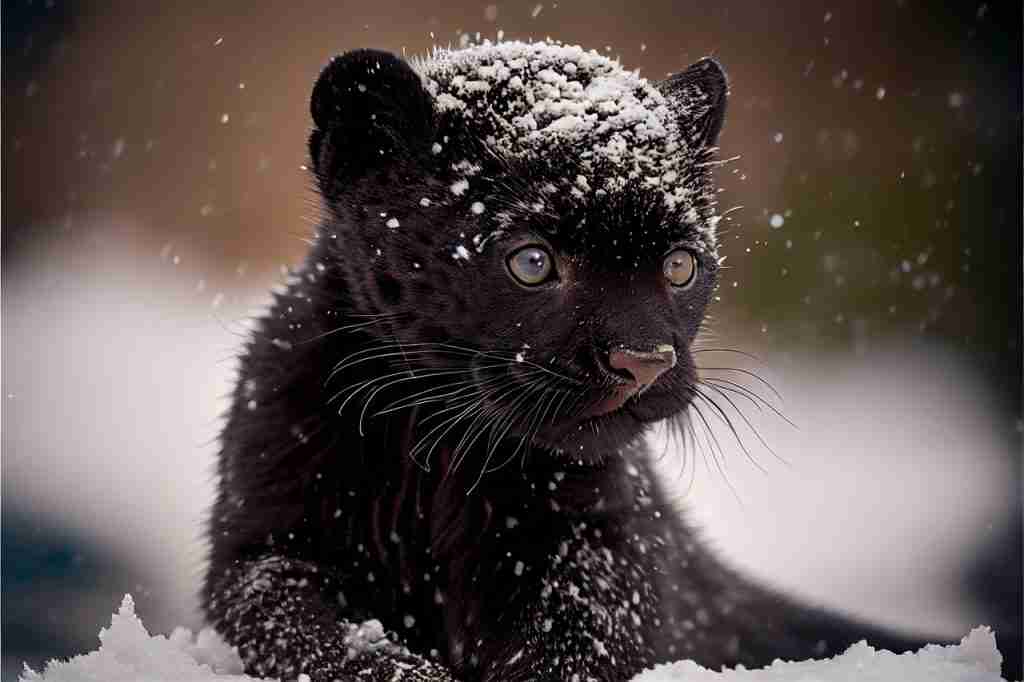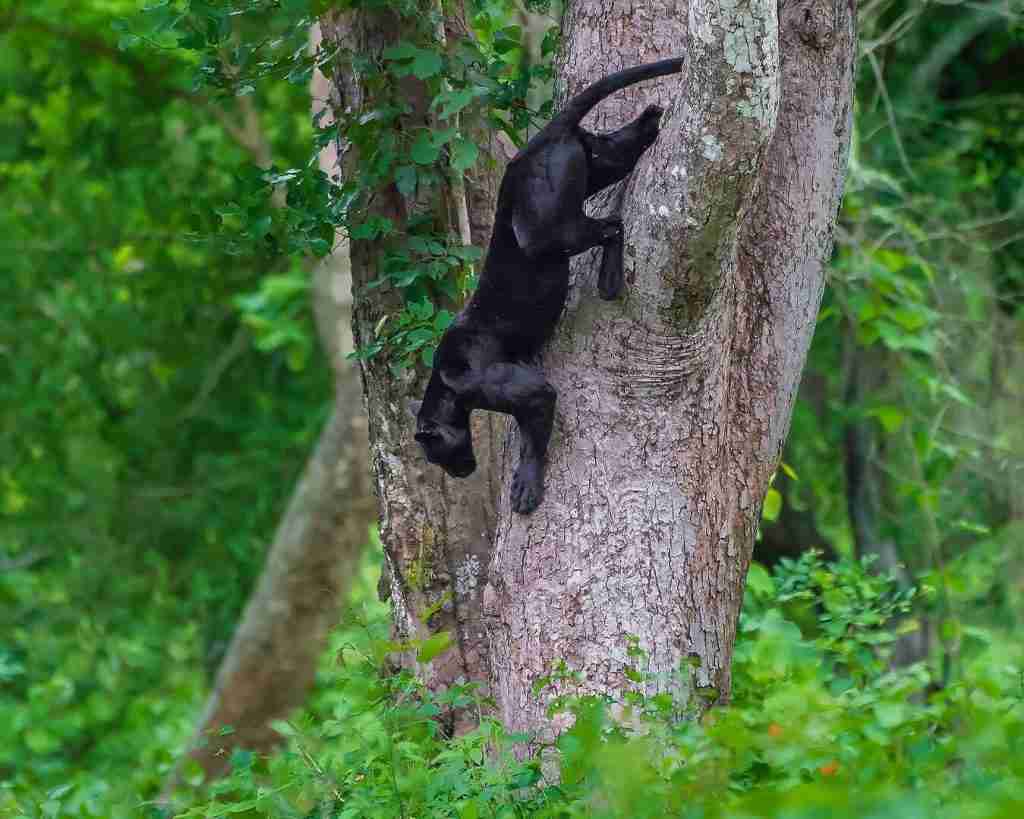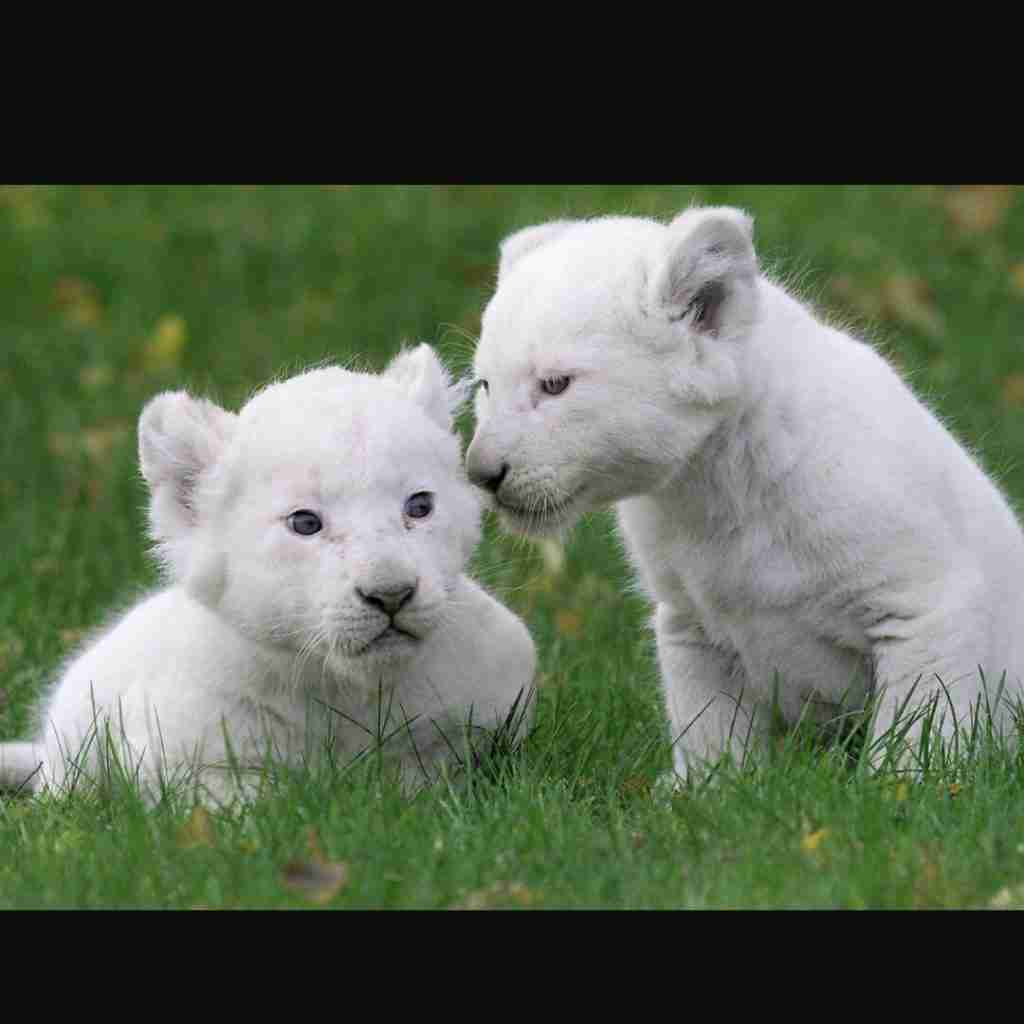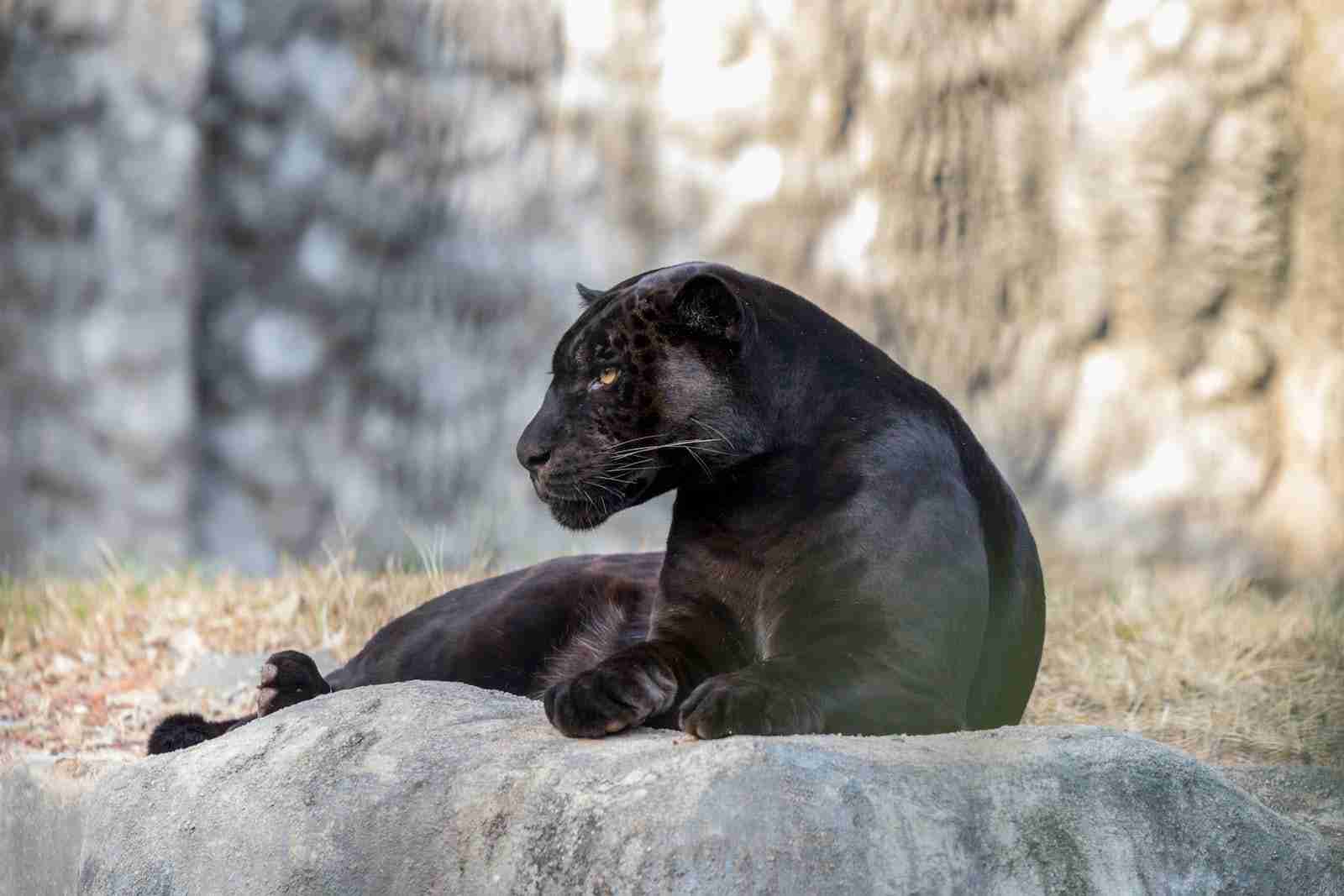22 Fun Facts About Black Panthers | Forest’s Ghost Hunters
1. Black Panthers are Leopards or Jaguars with a melanism gene causing their black fur.
Black panthers are not a separate species but leopards or jaguars with a melanism gene mutation. This condition, caused by the agouti gene, leads to extra melanin production, giving them a black coat that masks their usual markings.
Found in Asia, Africa, and the Americas, these panthers are either black leopards (Panthera pardus) or black jaguars (Panthera onca).
2. Black Panthers are nocturnal hunters.
Black panthers are primarily nocturnal hunters, using their dark fur for night camouflage and typically hunting on the ground, sometimes ambushing from trees.
While they mostly rest during the day, some leopards in West Africa are active in daylight, as shown by scat analysis and radio tracking, employing stealth over long chases.
3. Melanism is common in Leopards, occurring in about 11% of their population.
Melanism, resulting in dark fur, is found in about 11% of leopards, including Indian, Javan, African, Indochinese, and Sri Lankan subspecies, mainly in moist broadleaf forests.
While some leopards appear black due to dense markings, their faces and underparts are lighter; in jaguars, this melanism is less common.
4. Black Panther cubs are born blind and gain sight after about two weeks.

Black Panther cubs are born blind due to undeveloped eye structures, opening their eyes after 4-9 days. They have a 40-50% survival rate in their first year, vulnerable to predators, especially when left alone as their mother hunts.
The cubs stay with their mother for around 18 months, gradually developing adult-like features before establishing their territories.
5. Black panthers are solitary animals, coming together only for mating.
Black panthers are typically solitary, living, hunting, and traveling alone, except during mating season when they interact.
Females undergo a 46-day estrous cycle, attracting males with scent markings and sounds, but pairs separate shortly after mating, with cubs born when the female is around 2 ½ years old.
6. Lions and hyenas are key predators that often hunt Black Jaguars.
Lions and hyenas, as major predators, often target black jaguars, especially attempting to steal their prey like deer or impalas. Leopards, too, face dangerous encounters with these predators.
Such confrontations over food can lead to deadly face-offs between panthers and their rivals, hyenas or lions, highlighting the perilous interactions in their ecosystem.
7. Black panthers are rare, with melanism affecting about 6% of the population.
Melanism, causing the black coloration in Panthera species, occurs in only about 6% of the population. This rarity means just 6% appear as ‘black panthers’ to observers.
In these species, a pair with melanism can produce both black and spotted cubs, while spotted pairs only have spotted offspring, emphasizing the uniqueness of this genetic trait.
8. Black Panthers are powerful swimmers.
Black panthers, particularly jaguars, thrive in habitats with water like rivers and flooded forests, using their strong swimming skills for hunting and recreation.
While leopards also swim, they are less inclined to spend as much time in water compared to jaguars, who often swim for leisure and cooling off.
9. Panthera Pardus is listed as endangered and vulnerable by IUCN.
Panthera pardus, classified as Vulnerable by the IUCN, faces threats from habitat loss, poaching, and conflict. They are particularly hunted in Asia for medicinal trade and in Africa for their skins and parts.
The decreasing likelihood of two gene-carrying individuals mating, combined with habitat destruction, leads experts to consider black panthers globally endangered.
10. Black Panthers can roar just like Lions.
Black panthers, though mostly silent, can roar like lions to protect territory or during hunting. Their unique voice box, where a bone is replaced by a stretchable ligament, allows a wide range of pitch, enabling roars.
The more this ligament extends, the deeper the roar, due to their large, fleshy vocal cords, a trait shared with other big cats.
11. A Black Panther eats 30 to 40 pounds of meat every day.
Black panthers, carnivorous big cats, typically eat 20 to 30 pounds of meat in one sitting. Their diet varies with habitat and prey availability. After feeding, they cover their kill with debris to protect it from scavengers.
Female panthers with kittens might consume even more to meet their nutritional needs, adapting to the threats and resources of their dense forest environment.
12. Black panthers use stealth and surprise to hunt.
Panthers hunt using stealth, silently stalking and springing short distances to surprise prey. Nocturnal and camouflaged by their dark fur, they rely on keen eyesight and smell rather than speed, conserving energy by hiding and ambushing.
Their unpredictability and aggression, especially in black panthers, earn them the nickname ‘ghost of the forest.’
13. In leopards, a recessive gene ensures two black leopards always have black cubs.
In leopards, melanism is caused by a recessive gene. Spotted leopards carrying this gene can produce black cubs, while two black leopards mating will always result in black offspring.
This genetic trait ensures that if both leopard parents have the melanism gene, even in hidden form, they can have melanistic cubs.
14. Black panthers are seen as very smart among the Felidae family members.
Black panthers are regarded as highly intelligent within the Felidae family, known for their strategic hunting techniques and effective nocturnal behavior. Their intelligence, combined with their elegance and speed, makes them formidable predators.
This perception of intelligence and ferocity has led to their widespread adoption as mascots and logos for sports teams, symbolizing strength and agility.
15. Black panthers are territorial animals and mark their territory with scent markings.
Black panthers, both melanistic leopards and jaguars, are solitary and territorial, marking their areas with scent markings and vocalizations. Both sexes use urine to mark their ranges, effectively keeping intruders away from their extensive territories.
They use scratches and vocal signals to assert presence, with males establishing territories twice the size of females, overlapping several female ranges.
16. The Black Panthers are sharp climbers.

Black panthers are exceptional climbers, using their sharp claws and large paws to ascend trees up to 20 feet high. They skillfully climb and leap between trees to hunt and often drag prey larger than themselves up branches to avoid scavengers.
These big cats, like domestic ones, use high perches for better surveillance, especially at night.
17. Intraspecific aggression greatly reduces black panthers’ reproduction rates.
Intraspecific aggression, often due to territorial disputes, significantly lowers black panther reproduction rates, causing about 18% of deaths. Adult males typically attack juvenile males entering their territory, sometimes even targeting females or older males.
This aggression, alongside other threats like habitat loss, leads to deadly fights, especially during mating competition, further impacting their survival.
18. Black Panthers hide larger prey like deer high in the trees.
Black panthers, known for their strong, agile bodies and long tails, skillfully climb trees to stash larger prey like deer, safe from other predators.
Their athletic build and powerful hind legs enhance their hunting prowess, allowing them to carry substantial kills, such as impalas, and up trees. They also use tree branches as strategic points to ambush their prey.
19. Black Panthers are thought to survive better around humans.
Black panthers adapt better to human-populated areas than other big cats, despite habitat threats. Generally avoiding human conflict, panthers rarely attack unless their territory is encroached upon or they feel threatened.
Contrary to myths, they are not man-eaters, and incidents of harming humans are exceptionally rare.
20. Just like Black Panthers, there are also White Panthers.

White panthers, similar to black panthers, are not a distinct species but albino or leucistic variants of big cats, predominantly found in India and southern China.
These rare white panthers result from genetic mutations like albinism, which eliminates melanin, or leucism, which reduces pigmentation in patches. This poses a huge disadvantage to leopards and jaguars as they can’t camouflage themselves completely in the day or night.
21. Deforestation is a major reason for declining Black Panther populations.
Habitat loss from deforestation, agriculture, and urbanization is a significant threat to black panthers. Human expansion leads to conflicts, often resulting in harm to both panthers and communities.
Poaching and illegal wildlife trade further endanger these cats, while climate change disrupts ecosystems, affecting their survival. Conservation efforts are crucial to address these challenges and protect black panther populations.
22. The Black Panther is the national animal of Gabon.
Gabon’s national animal, the black panther, symbolizes strength and courage, officially adopted in 1982 for its cultural significance.
The country’s diverse ecosystem, home to forest elephants, gorillas, chimpanzees, hippos, and pangolins, highlights the black panther’s importance in Gabon’s rich wildlife heritage.
FAQs
Black panthers primarily inhabit the hot, dense tropical rainforests of South and Southeast Asia, including regions in Southwestern China, Burma, Nepal, Southern India, Indonesia, and Malaysia. They are less common in tropical Africa.
A black panther refers to the melanistic variant of leopards in Africa and Asia and jaguars in Central and South America. These animals have black fur but retain their species’ characteristic spots.
Estimating the exact number of black panthers worldwide is challenging, as they are not a distinct species. Current estimates suggest only a few dozen remain in the wild, with conservation efforts ongoing to protect them.
Black panthers, carnivorous hunters, primarily eat wild hogs, deer, raccoons, and over 80 other species including fish, rabbits, and monkeys. As cubs, they drink their mother’s milk before transitioning to solid food.
Black panthers, either leopards or jaguars, have spots hidden under their dark fur. This ‘ghost striping’ is due to excess melanin, making their characteristic spots less visible but still present.







